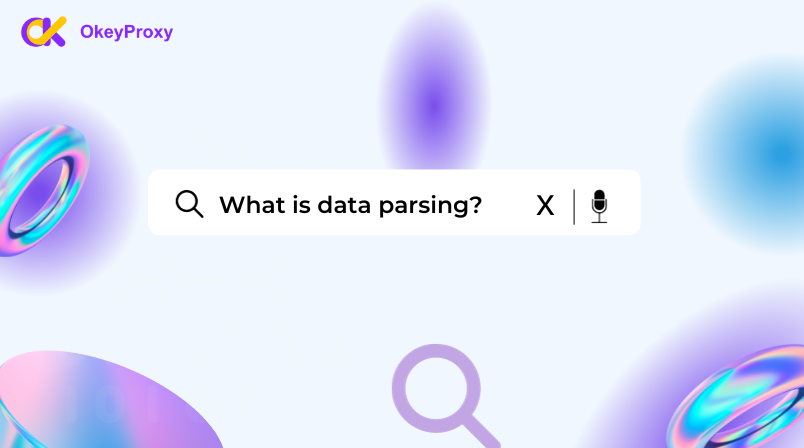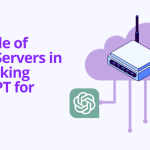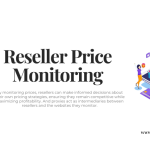数据解析是将数据从一种格式转换成另一种格式,广泛用于数据结构化,通常是为了使现有的、非结构化的、不可读的数据更容易理解。
什么是数据解析?
简而言之,作为现代数据处理的基石,数据解析是指从非结构化或半结构化数据源中分析和提取相关信息的过程。它包括将数据分解成较小的组成部分,如字段、记录或属性,以识别和提取特定的数据点。然后,这些结构化信息就可以被存储、分析和用于各种目的。
为什么需要进行数据解析?
计算机通常需要翻译才能进行有效通信。为了帮助机器理解它们无法识别或理解的当前格式的数据字符串,解析被用来将数据转换成设备可以理解和操作的形式,这类似于提供翻译,以便人们可以理解另一种语言的文本。
数据解析是一个将非结构化和难以辨认的数据字符串转换成计算机可以轻松理解的结构化和简单集合的过程,这样做有很多好处:
- 数据组织: 将原始数据或非结构化数据转换为结构化格式,以便于分析和操作。
- 自动化: 通过自动提取和格式化信息,简化工作流程。
- 互操作性: 确保不同数据格式的系统能够无缝通信。
- 改进决策: 为分析或报告提供清晰、可操作的数据。
从金融和教育到大数据和电子商务,数据分析被广泛应用于当今各行各业。有效的数据解析器可以从原始数据中提取相关信息,而无需任何人工干预。解析后的数据可用于各种活动,包括市场调研、价格比较等。 这项技术使公司能够做出明智的决策,并获得竞争优势。此外,数据分析还能提高工作效率,将繁琐的工作自动化,从而节省时间和人力,降低成本。在当今激烈的市场竞争中,数据分析已成为企业取得成就的关键因素。
解析数据的使用案例
- 商业智能:为决策和趋势预测整合并分析数据。
- 网络抓取:从网站中提取数据,用于电子商务、潜在客户生成和媒体监测。
- 应用开发:自动输入数据、支持实时应用程序以及支持机器学习。
- 金融分析:实时市场数据解析,用于交易、风险评估和欺诈检测。
- 营销:个性化营销活动、分析搜索引擎优化和评估广告效果。
- 医疗保健:构建病人数据、协助药物研究和监测公共卫生趋势。
- 法律:提取和整理法律文件,以便合规和研究。
- 供应链:管理库存、跟踪货运、优化配送路线。
- 教育:分析学生数据、解析研究内容、策划学习材料。
- 社交媒体:分析情绪、跟踪趋势和管理内容。
- 零售:分析客户反馈、优化忠诚度计划并预测需求。
- 政府:协助政策制定、危机管理并确保透明度。
数据解析是如何工作的?
数据解析通常包括以下步骤:
-
输入识别
从文件、应用程序接口或网页中读取原始数据。
-
令牌化
将数据分解成更小的元素,如文字、符号或数字。
-
句法分析
根据预定义规则(如 XML、JSON 模式)验证结构或格式。
-
数据提取
根据上下文检索相关信息。
-
输出转换
将提取的数据格式化为所需的结构,如表格、列表或对象。
数据解析的缺点
解析数据时,您通常要处理原始、非结构化或半结构化的输入。这些输入可能来自传感器、日志文件、数据库或网页等不同的数据源。由于数据源不同,数据的格式和质量也可能各不相同。然而,即使经过清理和转换,输入数据仍可能存在不准确、错误和不一致之处。
为了同时处理多个输入文档并节省时间,您可能希望采用并行处理数据的方法。但是,这种方法可能会增加资源使用量和整体复杂性。因此,要有效解析大数据,必须使用先进的工具和技术。
常用数据解析格式
- JSON(JavaScript 对象符号): 轻量级、人类可读的格式,广泛应用于应用程序接口。
- XML(可扩展标记语言): 结构化数据交换的灵活格式。
- CSV(逗号分隔值): 常用于表格数据存储和导入/导出任务。
- HTML 在网络搜刮过程中解析网页内容时必不可少。
数据解析技术
- 正则表达式 (Regex): 非常适合简单文本提取,但对复杂结构缺乏可扩展性。
- DOM 解析: 用于导航和提取结构化 HTML 或 XML 文档。
- 事件驱动解析 适用于大型数据集;以事件形式处理输入(如用于 XML 的 SAX)。
- 图书馆和框架 Python、Java 或 PHP 等编程语言提供了强大的解析库。
解析数据的常用工具
| 工具 | 最适合 | 语言 |
|---|---|---|
| 美丽汤 | 网络搜刮和 HTML/XML 解析 | Python |
| JSON.parse() | 用 JavaScript 解析 JSON | JavaScript |
| 大熊猫 | 处理表格数据(如 CSV、Excel) | Python |
| Xml.etree | XML 解析 | Python |
| Cheerio.js | 在 Node.js 环境中进行网络搜刮 | JavaScript |
| 格森 | 安卓/Java 应用程序的 JSON 解析 | Java |
数据解析的实际应用
- 网络抓取: 从网站上提取产品价格、评论或标题。
- 数据整合: 将多种来源的信息整合为统一格式。
- 日志分析: 解析服务器日志,以监控活动、检测错误或跟踪用户行为。
- 自然语言处理(NLP): 为情感分析、翻译或摘要对文本进行标记和分析。
- 文件转换: 将 JSON 等格式转换为 CSV,以便与数据库或分析工具兼容。
数据解析的挑战
处理非结构化数据
解析自由格式文本或不一致输入。
性能问题
在不消耗过多资源的情况下高效处理大型数据集。
数据验证
确保解析的数据符合预期模式。
动态内容
适应经常变化的格式,尤其是网站格式。
结论
数据解析是从非结构化或半结构化数据源中提取结构化信息的重要过程。通过解析数据,企业可以提高数据质量、加强数据分析并实现流程自动化。数据解析的应用遍及各行各业,包括网络搜刮、文档处理、数据集成和自然语言处理。对于使用代理进行网络搜刮或处理动态内容,可靠的代理服务可以绕过地理限制,确保顺利访问数据丰富的网站,从而提高性能。因此、 OkeyProxy 相信它是协助用户完成网络搜索任务的可靠供应商。应用数据解析技术可帮助企业释放结构化信息的力量,从而在数据驱动的世界中做出明智决策、提高效率和竞争优势。



